[Portions reprinted from Two Thousand Kisses a Day: Gentle Parenting Through the Ages and Stages by L.R.Knost. Whispers Through Time: Communication Through the Ages and Stages of Childhood; The Gentle Parent: Positive, Practical, Effective Discipline; and Jesus, the Gentle Parent: Gentle Christian Parenting also available on Amazon and through other major retailers.]
~~~~~~~~~~~~~~~~~~~~~
“Life is a succession of lessons which must be lived to be understood.” ~Ralph Waldo Emerson
 All stages of parenting come with their own unique learning curve, their own challenges and frustrations, their own compromises and sacrifices, and their own flubs, false steps, and failures. From those first terror-stricken days with a newborn to the sleep-deprived months of infancy to the challenges of toddlerhood and beyond, parenting is a journey, not a destination. And when subsequent little ones arrive, the journey starts all over again as we discover that the lessons learned from parenting one child don’t always apply to the next as each have their own incomparable personalities, quirks, and individual identities.
All stages of parenting come with their own unique learning curve, their own challenges and frustrations, their own compromises and sacrifices, and their own flubs, false steps, and failures. From those first terror-stricken days with a newborn to the sleep-deprived months of infancy to the challenges of toddlerhood and beyond, parenting is a journey, not a destination. And when subsequent little ones arrive, the journey starts all over again as we discover that the lessons learned from parenting one child don’t always apply to the next as each have their own incomparable personalities, quirks, and individual identities.
The principles of gentle parenting (connection, empathy, respect, etc.) don’t change as our children grow, just as they don’t change from one child to the next. What does change is our understanding of those principles as we grow in wisdom and experience as parents and as human beings. The practical application of gentle parenting principles, though, can look very different from child to child and life stage to life stage. For instance, with an introverted child gentle parenting might involve a greater degree of physical proximity and emotional support whereas with a very extroverted child it may involve a greater degree of energy direction and respectful guidance.
This constancy of principles and individualized application of gentle parenting is no less true when parenting our adult children than it is when parenting our minor children. As gentle parents, we are our children’s first and best friend in the purest and truest definition of friendship. That sets the stage for the transition from the early parent/friend years to the parent-friendship that will characterize our relationship when our children grow into adulthood.
Here are 12 practical tips for gently parenting your adult children:
1.) Begin to consciously pay attention to your own parents’ interactions with you. Mentally catalog what you find helpful and what you find intrusive, what is an acceptable level of involvement, advice, and interaction and what feels overbearing or lacking. Make a mental note (or make actual notes if you’re a list person like me) to remember those feelings when your own children become adults.
2.) Remember, parenting is literally ‘on the job’ learning. Your parents are discovering by trial and error (often lots of error) what their roles and boundaries are in this uncharted territory of parenting adults. Model giving your parents grace when they overstep or underplay their roles. This will set the stage for your children to extend the same grace to you when seemingly overnight you suddenly find yourself learning to parent your own adult children.
3.) While your child is an infant, meet their needs swiftly, consistently, and gently. They won’t remember what you did or didn’t do at this stage, but they will always carry with them the safety, security, and love that they feel in your responsiveness, and that is they will take with them into adulthood.
4.) When your child reaches toddlerhood, focus on connection rather than correction. What will matter most in later years won’t be whether they wore matching shoes or left the park without pitching a fit. What will matter is whether they felt heard, understood, and respected.
5.) As your child moves into the preschool and early childhood years, focus on communication, whether that takes the form of whining, tattling, endless questions or some combination of all three. Continue to build a trust relationship by hearing their heart rather than their tone and responding with gentle guidance.
6.) When your child reaches the middle stages of childhood, listening to the endless stories from your chatterbox or offering empathy and quiet support to your dreamer will help them as they explore who they are and who they want to be when they grow up. You are building the friendship of a lifetime in these interactions, so make them a priority.
7.) Once your child enters the teen years, consciously begin to gradually shift your role into a supporting rather than a leading act. Listen not to their words, their attitudes, their hormones, their angst. Listen instead to their struggles, their hopes, their dreams, their fears. Remember, you are the only adult in the relationship at this point. They still have a lot of maturing to do. Practice self-control. Be honest about your own struggles, fears, and failings. You’ll be amazed at what a connection point that is as your teen discovers that they aren’t alone in their humanness. Be the first one to listen, the first one to forgive, the first one to apologize, the first one to understand, the first one to back down and try to find another way when the going gets tough.
8.) When your child becomes an adult, let them set the pace. Some children will hit eighteen and be ready to move into a university dorm or get a job and an apartment right away. Others will need a slower transition. They may need to stay at home while going to university or while taking some time to try out different jobs as they explore this strange new world of adulthood. There’s nothing wrong with adult children living at home, especially in difficult economic times such as these, but if the time comes that you feel they need a gentle nudge out of the nest you can help them to find an acceptable roommate or two and guide them through the process of settling into independent adulthood.
9.) Once your child is out on their own, your role will shift fully to a support system. Offering unsolicited advice is fine as long as it is briefly stated…once. After that, it becomes intrusive. Offers of help and invitations to family events, etc. should follow the same guidelines.
10.) When your child starts a family of their own, consciously bring to mind how you felt at various times when your own parents supported you in your new role and/or interfered with the establishment of your new little family. Acknowledge to yourself (and to them) that they won’t do everything the way you did, that they will make decisions you wouldn’t make, that you will offer advice that won’t be heeded, and that they will make mistakes and have to learn from them just like you did, and remind yourself that those things are all perfectly okay.
11.) On the subject of making mistakes, remember, just as you wouldn’t want every youthful mistake, every wrong choice, every unfortunate decision to be broadcast to the world or even just joked about privately instead of being left in the past where it belongs, be sure to practice ‘The Golden Rule of Parenting’ and treat your children how you prefer to be treated.
12.) Keep in mind that the person you are now isn’t the person you were when you first started out on your journey into adulthood. Expecting your young adult children to think and experience and process life and events the way that you do now is like expecting a newborn baby to be able to pick up a book and read it. So set aside your expectations and just offer your support as they learn to navigate the world of adulthood on their own.
Remember, our life experience can help our adult children, but they need to gain their own life experiences. Our role as parents of adults is to find the balance between too much and too little of pretty much everything: advice, help, assistance, involvement, etc. The voice of experience has an immense amount of wisdom to offer, but only if it also has the wisdom to know when to remain silent.
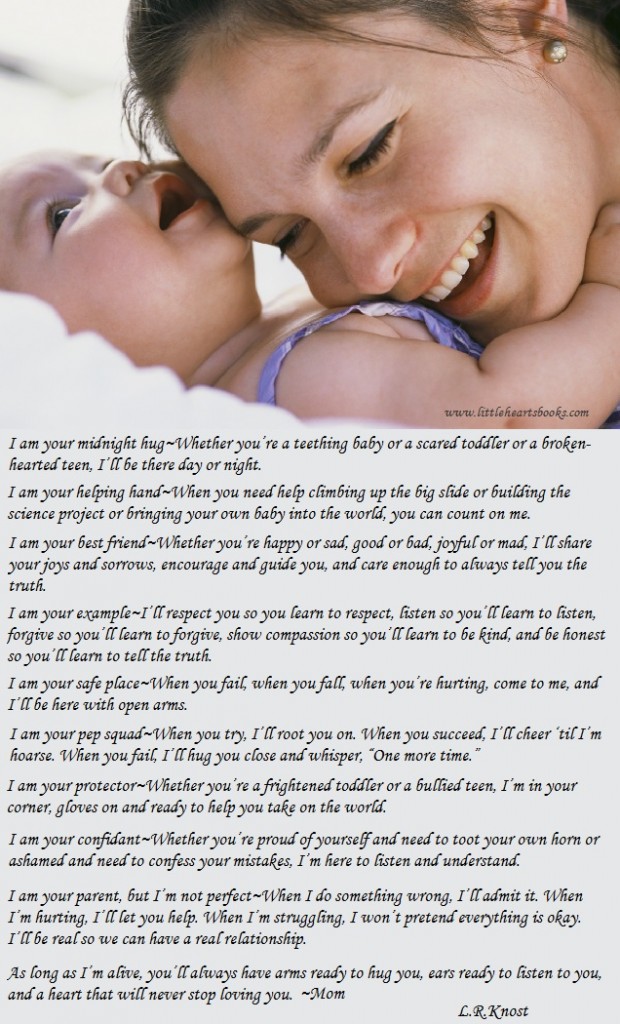
Related posts:
Backtalk is Communication…LISTEN
The Gift of a Strong-Willed Child
Bridge Over Troubled Waters~Parenting a ‘Problem’ Child
Two Thousand Connection Points a Day: Attachment Parenting Beyond Infancy
A Boy, A Girl, and A Baby~Journey to Gentle Parenting
 Award-winnning author, L.R.Knost, is the founder and director of the children's rights advocacy and family consulting group, Little Hearts/Gentle Parenting Resources, and Editor-in-Chief of Holistic Parenting Magazine. Books by L.R.Knost include Whispers Through Time: Communication Through the Ages and Stages of Childhood ; Two Thousand Kisses a Day: Gentle Parenting Through the Ages and Stages ; The Gentle Parent: Positive, Practical, Effective Discipline ; and Jesus, the Gentle Parent: Gentle Christian Parenting the first four books in the Little Hearts Handbook gentle parenting series, and children’s picture books Petey’s Listening Ears and the soon-to-be-released Grumpykins series.
Award-winnning author, L.R.Knost, is the founder and director of the children's rights advocacy and family consulting group, Little Hearts/Gentle Parenting Resources, and Editor-in-Chief of Holistic Parenting Magazine. Books by L.R.Knost include Whispers Through Time: Communication Through the Ages and Stages of Childhood ; Two Thousand Kisses a Day: Gentle Parenting Through the Ages and Stages ; The Gentle Parent: Positive, Practical, Effective Discipline ; and Jesus, the Gentle Parent: Gentle Christian Parenting the first four books in the Little Hearts Handbook gentle parenting series, and children’s picture books Petey’s Listening Ears and the soon-to-be-released Grumpykins series.

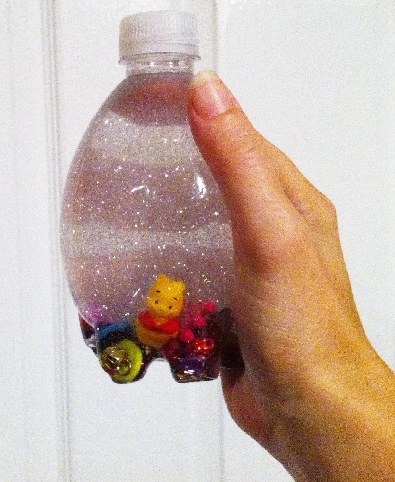

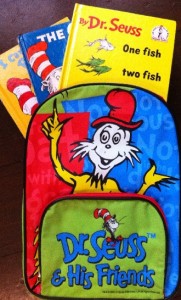


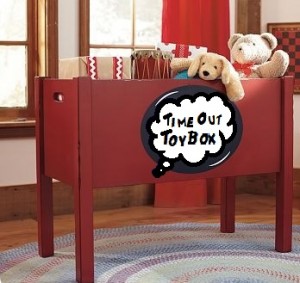
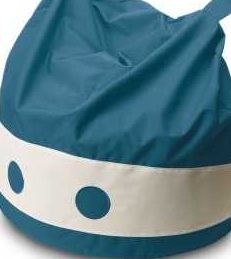


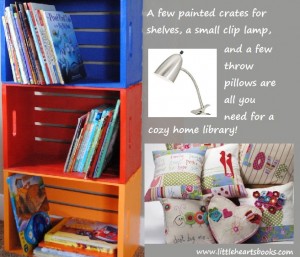
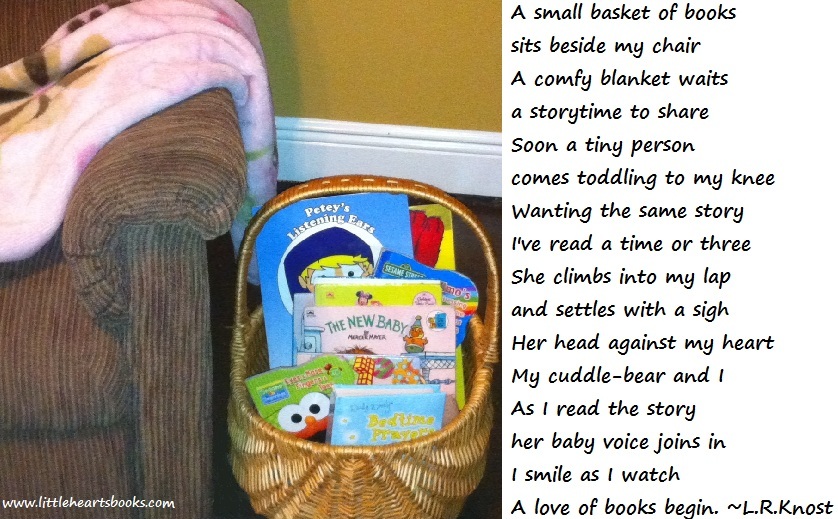
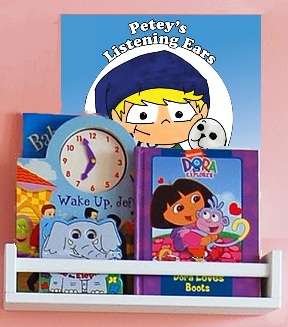 While your little one is making the
While your little one is making the 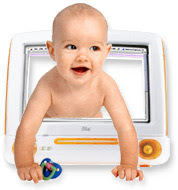 I remember how excited I was when I first got my computer. I carefully cut the tape on the box, gently lifted it out, and gingerly settled it in the well-appointed and super organized office I’d had decorated and waiting for what seemed like forever.
I remember how excited I was when I first got my computer. I carefully cut the tape on the box, gently lifted it out, and gingerly settled it in the well-appointed and super organized office I’d had decorated and waiting for what seemed like forever.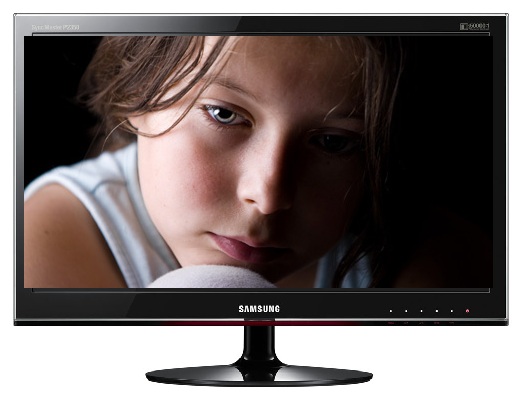 “Virus software update available.” Me, me, me. I want. I want. I want. Isn’t it amazing how completely self-absorbed computers are? Didn’t my computer realize I had a schedule to keep? I had things that needed to get done, an agenda, a life! And on top of all that, I’d just purchased a new little laptop that needed my attention. Why couldn’t my computer understand that it just had to do what it was told and stop giving me a hard time?!? Selfish, that’s why!
“Virus software update available.” Me, me, me. I want. I want. I want. Isn’t it amazing how completely self-absorbed computers are? Didn’t my computer realize I had a schedule to keep? I had things that needed to get done, an agenda, a life! And on top of all that, I’d just purchased a new little laptop that needed my attention. Why couldn’t my computer understand that it just had to do what it was told and stop giving me a hard time?!? Selfish, that’s why! or a virus scan or whatever it’s indicating it needs. If you meet it’s needs, that will not only stop the “demands” but also free it up to run more smoothly and responsively for you. As far as the “delayed obedience,” that’s just how computers are built. It needs time to process your input so that it can respond appropriately. Pushing its buttons over and over is actually causing the freezing you’re concerned about, and unplugging your computer when it freezes just shuts it down right when it’s trying its hardest to work things out. Remember, interaction between owner and computer is the core of computer processing. Finally, stop “whacking” your computer. Call it what you want…hitting, tapping, popping, or whatever…it’s just causing internal damage and resulting in the very problems you’re trying to solve.
or a virus scan or whatever it’s indicating it needs. If you meet it’s needs, that will not only stop the “demands” but also free it up to run more smoothly and responsively for you. As far as the “delayed obedience,” that’s just how computers are built. It needs time to process your input so that it can respond appropriately. Pushing its buttons over and over is actually causing the freezing you’re concerned about, and unplugging your computer when it freezes just shuts it down right when it’s trying its hardest to work things out. Remember, interaction between owner and computer is the core of computer processing. Finally, stop “whacking” your computer. Call it what you want…hitting, tapping, popping, or whatever…it’s just causing internal damage and resulting in the very problems you’re trying to solve. Here are our very own fruit gummie snacks made from jello and water. They taste like gummies. They feel like gummies. They have lots of cool shapes like gummies. But they don’t have HFCS like gummies!
Here are our very own fruit gummie snacks made from jello and water. They taste like gummies. They feel like gummies. They have lots of cool shapes like gummies. But they don’t have HFCS like gummies!

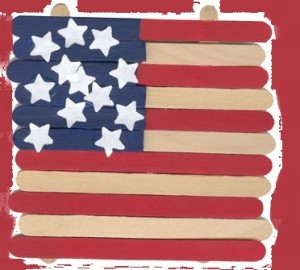









 As writers, we’ve all had the experience of publishing a piece we’ve worked hard putting together, and then posting it to Facebook, sharing it on Twitter, and pinning it on Pinterest…and having it just sit there, unliked, unshared, untweeted, and unpinned. Now, logically, we might know that only a small percentage of our audience sees what we share at any given time. And we know that, while some pieces we write hit just the right note at the right time and go flying around the blogosphere, others might need time to catch on or might simply remain a lonely, little, unread, unloved piece of ourselves that we’ve bravely put out there and the world has overlooked. But even knowing all of that, in those times when we share and no one hears us, when we bare our hearts and no one responds, the silence can feel like rejection, the work can feel pointless, the investment can feel wasted.
As writers, we’ve all had the experience of publishing a piece we’ve worked hard putting together, and then posting it to Facebook, sharing it on Twitter, and pinning it on Pinterest…and having it just sit there, unliked, unshared, untweeted, and unpinned. Now, logically, we might know that only a small percentage of our audience sees what we share at any given time. And we know that, while some pieces we write hit just the right note at the right time and go flying around the blogosphere, others might need time to catch on or might simply remain a lonely, little, unread, unloved piece of ourselves that we’ve bravely put out there and the world has overlooked. But even knowing all of that, in those times when we share and no one hears us, when we bare our hearts and no one responds, the silence can feel like rejection, the work can feel pointless, the investment can feel wasted. Just as with adults, and specifically with those of us who are writers, children need to know they are being heard and appreciated. A ‘like’ on a post to us is like a pat on the back to a child, and a “Well said!” to a writer is like a “Good job!” to a child. In the same way that these acknowledgements don’t undermine our driving passions, but support and encourage them, spontaneous and sincere expressions of appreciation to a child don’t undermine a child’s passion to learn and grow and become. It is, in fact, the exact opposite. A parent’s sincere, spontaneous praise encourages and motivates a child to blossom in the warmth of their approval.
Just as with adults, and specifically with those of us who are writers, children need to know they are being heard and appreciated. A ‘like’ on a post to us is like a pat on the back to a child, and a “Well said!” to a writer is like a “Good job!” to a child. In the same way that these acknowledgements don’t undermine our driving passions, but support and encourage them, spontaneous and sincere expressions of appreciation to a child don’t undermine a child’s passion to learn and grow and become. It is, in fact, the exact opposite. A parent’s sincere, spontaneous praise encourages and motivates a child to blossom in the warmth of their approval.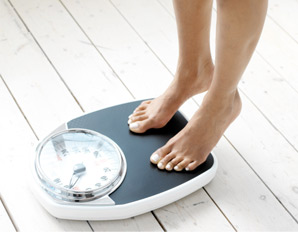 There is no such thing as a ‘miracle’ weight-loss plan, but living a healthy, active life and eating nutritious meals doesn’t have to be all about sweat, sacrifice, and self-discipline, either. It can be about having fun, eating foods you love, and, best of all, it can fit right in with your lifestyle! By following a few basic nutritional guidelines and finding ways to fit exercise into your daily life, you can create your own ‘life plan’ and start moving toward your weight-loss and health goals.
There is no such thing as a ‘miracle’ weight-loss plan, but living a healthy, active life and eating nutritious meals doesn’t have to be all about sweat, sacrifice, and self-discipline, either. It can be about having fun, eating foods you love, and, best of all, it can fit right in with your lifestyle! By following a few basic nutritional guidelines and finding ways to fit exercise into your daily life, you can create your own ‘life plan’ and start moving toward your weight-loss and health goals.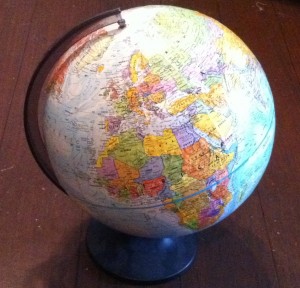 are, so I let their interest inspire us to take a trip ‘around the world.’ Of course, I can’t afford a vacation even as far as the beach right now, and it’s only forty-five minutes away! So our trip must, of necessity, be a virtual one. But that doesn’t mean it has to be a boring one!
are, so I let their interest inspire us to take a trip ‘around the world.’ Of course, I can’t afford a vacation even as far as the beach right now, and it’s only forty-five minutes away! So our trip must, of necessity, be a virtual one. But that doesn’t mean it has to be a boring one! Then, we got a big blue bouncy ball, some shaving cream, green food coloring, bowls, some painting sponges, and went to work. A great big dollop of shaving cream and a few drops of green food coloring was all it took to make washable ‘paint’ for our super-sized globes. (Everybody was dyed green wherever the shaving cream touched, lol, but it all washed off with soap easily when we were finished.) The girls took turns making their own globes. With the younger ones, I named the continents they were creating and pointed out where we lived in relation. With my older one, I asked where certain
Then, we got a big blue bouncy ball, some shaving cream, green food coloring, bowls, some painting sponges, and went to work. A great big dollop of shaving cream and a few drops of green food coloring was all it took to make washable ‘paint’ for our super-sized globes. (Everybody was dyed green wherever the shaving cream touched, lol, but it all washed off with soap easily when we were finished.) The girls took turns making their own globes. With the younger ones, I named the continents they were creating and pointed out where we lived in relation. With my older one, I asked where certain continents/countries were, and she pointed them out. Then she got all ‘topographical’ and wanted to add in mountains and volcanoes, which was fun and made for her own unique spin on the globe (pun intended!).
continents/countries were, and she pointed them out. Then she got all ‘topographical’ and wanted to add in mountains and volcanoes, which was fun and made for her own unique spin on the globe (pun intended!).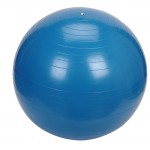 We wanted to use a great big blue exercise ball, but ‘somehow’ mine got popped the last time my children were playing with it, and I didn’t want to spend $20 on a new one, so I bought a big bouncy ball from Walmart for $2.50 instead. I’ll probably spring (Sorry, I can’t help myself, lol) for the big ball when we do latitude and longitude, though, because it’s already got the lines of latitude on it!
We wanted to use a great big blue exercise ball, but ‘somehow’ mine got popped the last time my children were playing with it, and I didn’t want to spend $20 on a new one, so I bought a big bouncy ball from Walmart for $2.50 instead. I’ll probably spring (Sorry, I can’t help myself, lol) for the big ball when we do latitude and longitude, though, because it’s already got the lines of latitude on it!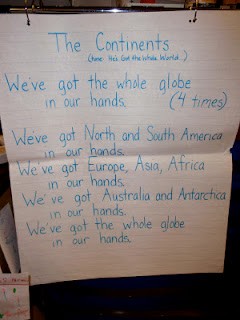 This site seems to have disappeared, but this was a cute idea for learning the continents…sing them to ‘He’s Got the Whole World in His Hands.’
This site seems to have disappeared, but this was a cute idea for learning the continents…sing them to ‘He’s Got the Whole World in His Hands.’ Love this idea from
Love this idea from 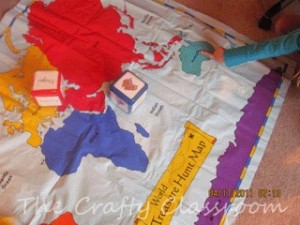 This looks like so much fun from
This looks like so much fun from 
 The US has some of the highest rates of depression, anxiety, cancer, and other diseases in the world. Every year our government puts billions of dollars into funding programs that attempt to address these issues. The efforts are consistently ineffective. We are the leaders of the free world and we must remain healthy to stay that way.
The US has some of the highest rates of depression, anxiety, cancer, and other diseases in the world. Every year our government puts billions of dollars into funding programs that attempt to address these issues. The efforts are consistently ineffective. We are the leaders of the free world and we must remain healthy to stay that way. Toddlers and preschoolers are still in the early stages of learning to
Toddlers and preschoolers are still in the early stages of learning to 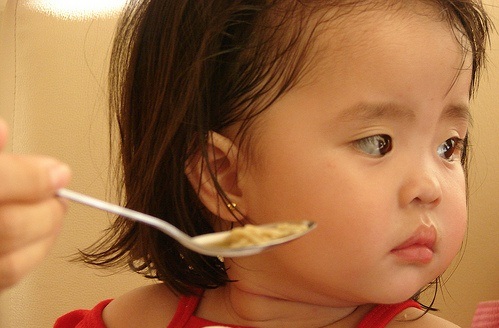 I was one of those children who was incredibly picky when it came to food and, despite my mom’s gently enforced ‘one bite rule,’ I went on to become an incredibly picky eater as an adult, as well. I vividly remember as a young child gagging as I tried to force down a bite, my throat feeling like it was closing up, and like there was no way food was going to fit through there. As a very compliant child, it bothered me immensely to disappoint my mom, and, being the logical person that I was even at that young age, I remember feeling that her expectations were very reasonable and being frustrated at my own inability to comply.
I was one of those children who was incredibly picky when it came to food and, despite my mom’s gently enforced ‘one bite rule,’ I went on to become an incredibly picky eater as an adult, as well. I vividly remember as a young child gagging as I tried to force down a bite, my throat feeling like it was closing up, and like there was no way food was going to fit through there. As a very compliant child, it bothered me immensely to disappoint my mom, and, being the logical person that I was even at that young age, I remember feeling that her expectations were very reasonable and being frustrated at my own inability to comply.











